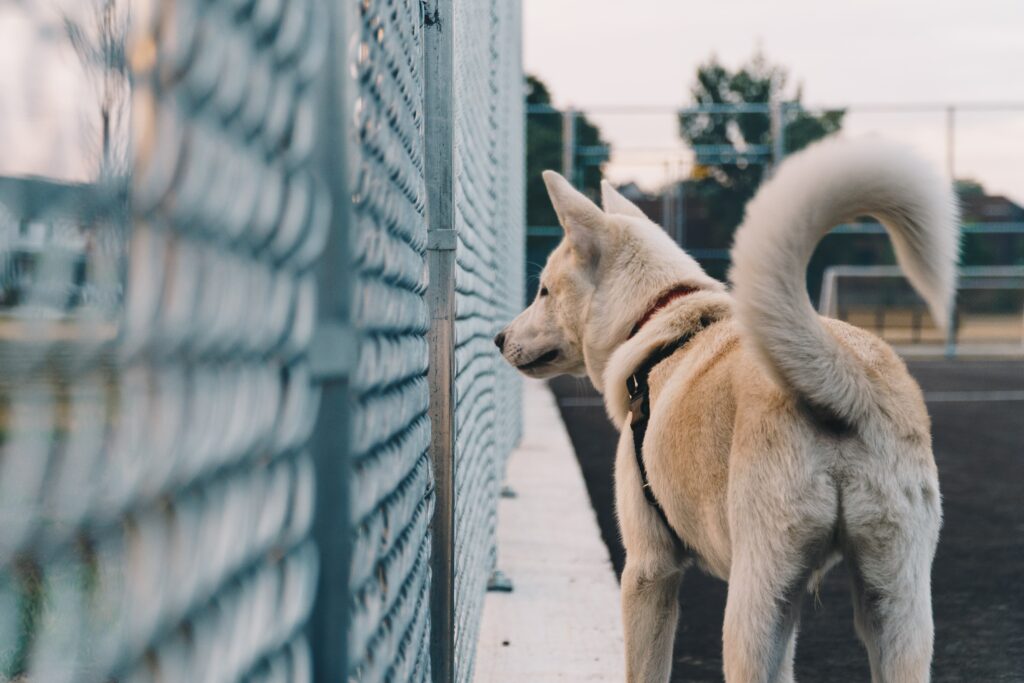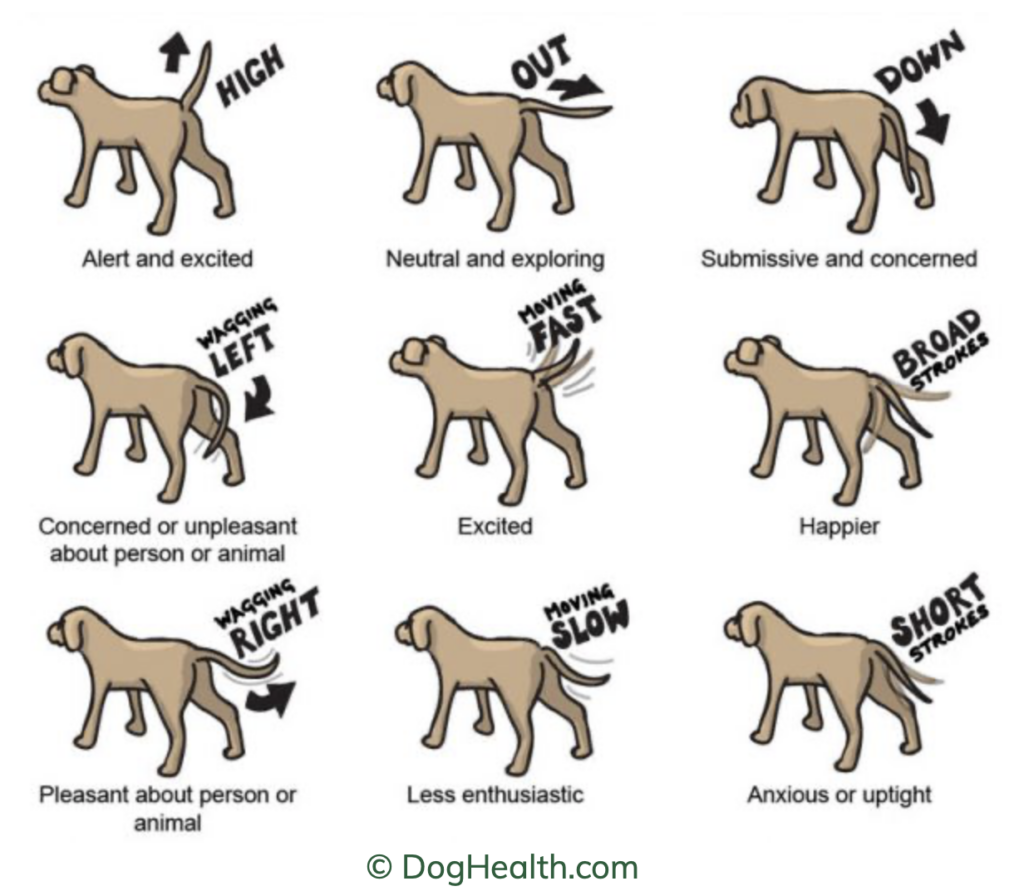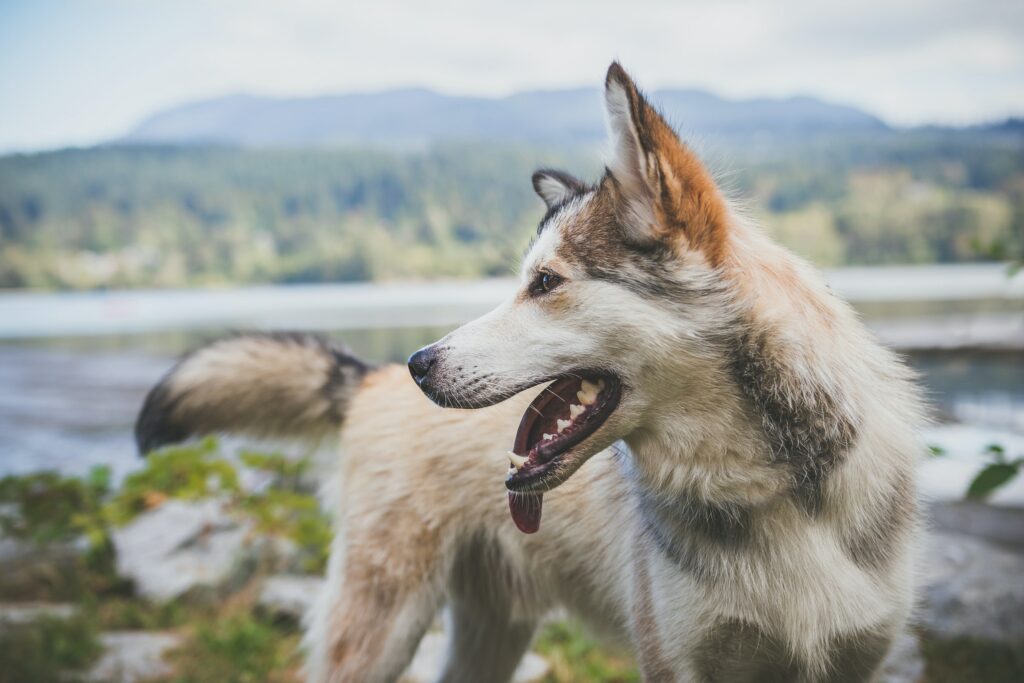Dog communicate mainly by body language, and it is our responsibility (as dog owners) to learn and watch for the subtle cues they are telling us. Here are some tips when reading dog body language.
Tail Wagging

A wagging tail is one of the first indicators we humans think the dog is happy, but we are often reading this wrong. A wagging tail means the dog is emotionally trigged. It could be excitement and joy, but could also be frustration or excitement towards dominance and aggression. In order to read the tail wag effectively, you’ll want to pay attention to the speed and position of the tail.

Raised Hackles

Just like tail wagging we assume a dog is happy, when we see raised hackles we think aggression, but again, we are wrong. Raised hackles is when the dogs fur stands up on its back, often given them a larger appearance. But all it means is that the dog is excited. That excitement could be positive or negative, and often it is an involuntary response.
Posture
A dogs posture and how they are distributing their weight says a lot about how they are feeling.
Children and Dogs

This is one of the most important post people with dogs and kids should read. We often think our children snuggling with our dogs, hugging them tightly, laying on them, etc. is cute and harmless. And more often we think our beloved dogs enjoy it as well. But they are often telling us, time after time, that they are not comfortable and want space. Here are the tips you need to look out for when children are around dogs.

- Whale eye-ing. This is when they dog looks at the child sideways – head forward, eyes to the side. Dogs do this when they are uncomfortable in a situation.
- Averting gaze. This is when the dog continually looks away, turning the head away from the person, and is another sign the dog is uncomfortable.
- Bulging eyes. Bulging eyes is a sure sign of severe stress. If you see your dog’s eyes are bulging while being touched by a child, remove the child immediately.
- Relocating. This is when the dog will relocate to another area in the room. Often, children will just follow the dog to their new spot and the dog will relocate again. This is another sign that the dog is uncomfortable and needs space.
- Tongue Flicking. This is when the dog is constantly licking their nose or lips, or flicking his tongue out. It is a self-soothing behaviour, triggered during uncomfortable or stressful social situations.
- Baring teeth. This is when a dog will show you their teeth. It not always accompanied with a growl. When a dog shows their teeth they are sending you a very clear message to back off. Often, when a dog bares their teeth they get scolded, but that is the wrong thing to do. Baring teeth is a warning sign, and if a dog is scolded for it, they believe they are in trouble for warning a person to back off. Next time they might not give the warning, and go straight for the bite. If you see a dog baring their teeth at someone, quickly remove the person from the situation and let the dog be.
- Growling. This is usually accompanied if baring teeth didn’t send the message effectively. This too is not something you want to punish a dog for, as it is their way of giving a final warning. If baring teeth and growling doesn’t work, then biting is next.
A Relaxed and Composed Dog

Leave a Reply
You must be logged in to post a comment.